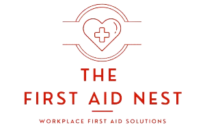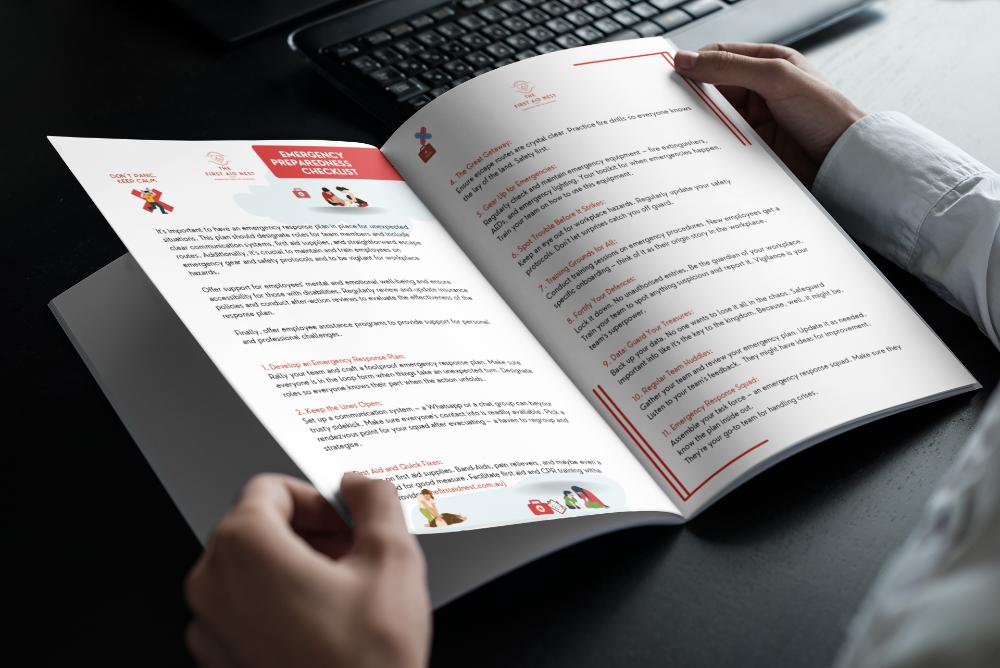Building Your First Aid Kit: Beyond the Basics
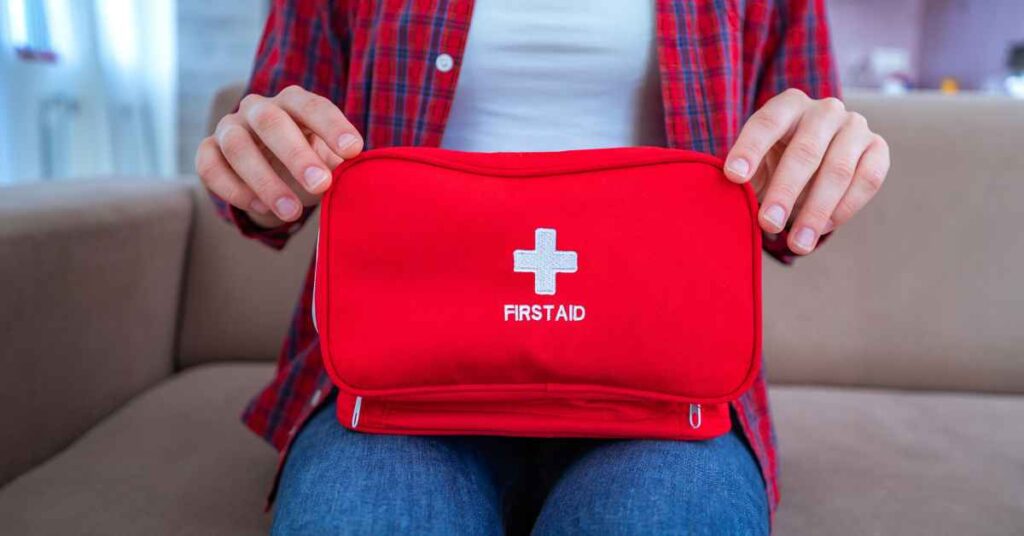
Having a first aid kit is not just about being prepared for minor cuts and scrapes; it’s about ensuring safety and immediate care in various unexpected situations. Whether it’s a sports injury, a sudden allergic reaction, or an exacerbation of a chronic health condition, the right supplies can make a significant difference in managing the situation until professional medical help is available.
This blog aims to guide readers through the process of assembling a comprehensive first aid kit tailored to specific needs.
We’ll explore beyond the basics, highlighting essential items for sports teams, large families, or individuals with chronic health conditions, and introduce unusual but incredibly useful items not typically found in standard kits. Our goal is to empower you with the knowledge to customize a first aid kit that meets your unique requirements, ensuring you’re well-prepared for a wide range of medical emergencies.
Understanding the Basics
Before we delve into customising a first aid kit, it’s important to understand what constitutes the foundation of any good kit.
Standard first aid kits usually include items like various sizes of bandages, antiseptics for cleaning wounds, gauze, adhesive tape, and scissors. While these basics cover a range of minor injuries and emergencies, they may not be adequate for specific needs or situations.
Recognizing the limitations of a basic kit is the first step towards creating a more comprehensive and personalized solution that can offer better preparedness and peace of mind.
Assessing Your Specific Needs
Assessing your specific needs when building a first aid kit is an exercise in foresight and understanding the unique environments and activities you or your group are involved in. Whether it’s for a sports team braving the physical challenges of the game, a large family with a diverse range of ages and health concerns, or individuals managing chronic health conditions, a well-thought-out first aid kit can be a lifeline in times of need. By meticulously tailoring your first aid supplies to fit these distinct scenarios, you not only enhance overall safety but also empower yourself and others with the tools and confidence needed to respond effectively to emergencies.
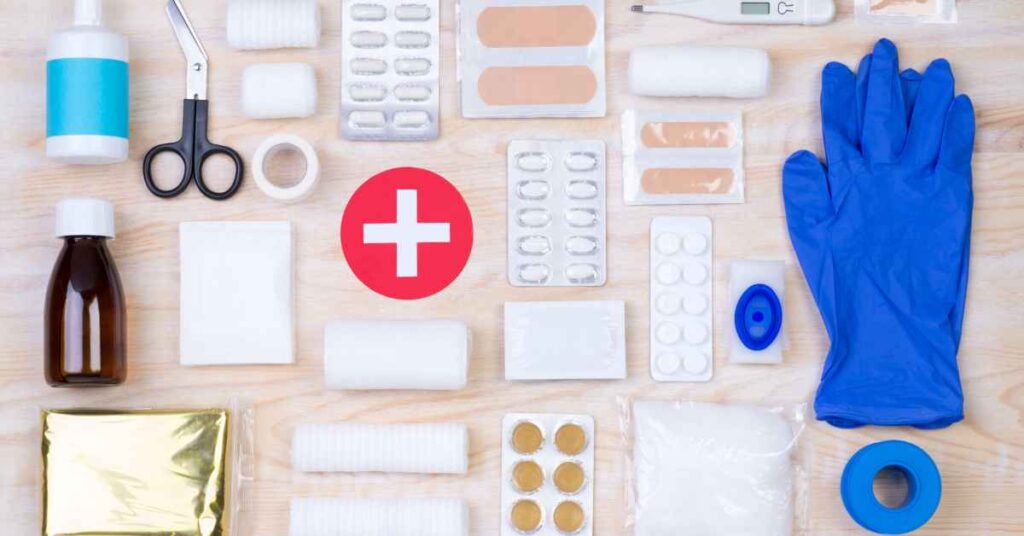
For Sports Teams
The dynamic and often physically demanding nature of sports puts athletes at a heightened risk of injuries. These can range from the relatively minor, such as bruises and abrasions, to more significant injuries like sprains, strains, or even fractures.
The intensity and physicality of sports necessitate a first aid kit that goes beyond the basics, incorporating items specifically designed to address and manage these common sports-related injuries.
- Common Injuries: Detailed exploration of sports-related injuries should include not only the types—sprains, strains, cuts, and concussions—but also the mechanisms of injury, understanding that quick and appropriate responses can significantly influence recovery times and outcomes.
- Extra Items Needed: Recommendations for sports-specific first aid supplies should consider the utility of cold packs for immediate swelling reduction, elastic bandages or compression wraps for managing sprains and strains, and splinting materials for immobilising suspected fractures. The inclusion of these items acknowledges the unique demands of sports and the necessity for rapid, on-site response to injuries.
For Large Families
A first aid kit for a large family must be versatile enough to accommodate the health and safety needs of members ranging from infants to the elderly. This challenge is twofold: ensuring a broad spectrum of supplies to cater to different ages and health conditions, and maintaining sufficient quantities of these essential items to address emergencies that may affect multiple family members simultaneously.
- Variety of Needs: This requires a nuanced understanding of the health risks and medical needs across the lifespan. For infants and young children, smaller bandages and paediatric doses of common medications are essential, while for older adults, considerations might include items like aspirin for heart attack prevention. Such diversity in supplies ensures that the first aid kit is truly inclusive and prepared to address a wide range of medical scenarios.
- Quantity Considerations: It’s critical to stock adequate quantities of essential supplies to avoid shortages during multiple or major incidents. This planning should extend to routine checks and replenishment of used or expired items to maintain the kit’s readiness at all times.
For Chronic Health Conditions
For individuals living with chronic health conditions, a first aid kit becomes more than just a collection of emergency supplies; it’s a tailored support system that provides both general and specialized care. This customization is essential for ensuring that the kit meets the specific needs of the individual, offering not just immediate medical support but also peace of mind.
- Personalized Items: Incorporating items such as extra doses of prescription medications, glucose monitors and supplies for those with diabetes, or epinephrine auto-injectors for individuals with severe allergies, transforms the first aid kit into a personalized emergency resource. This level of customization acknowledges the unique and often complex medical needs associated with chronic conditions.
- Emergency Contact Information: The inclusion of detailed emergency contact information and relevant medical history is a critical component of any first aid kit designed for individuals with chronic health conditions. This information can be invaluable to emergency responders, ensuring that they have immediate access to essential background details that can inform and guide their treatment decisions.
Unusual But Useful Items to Include
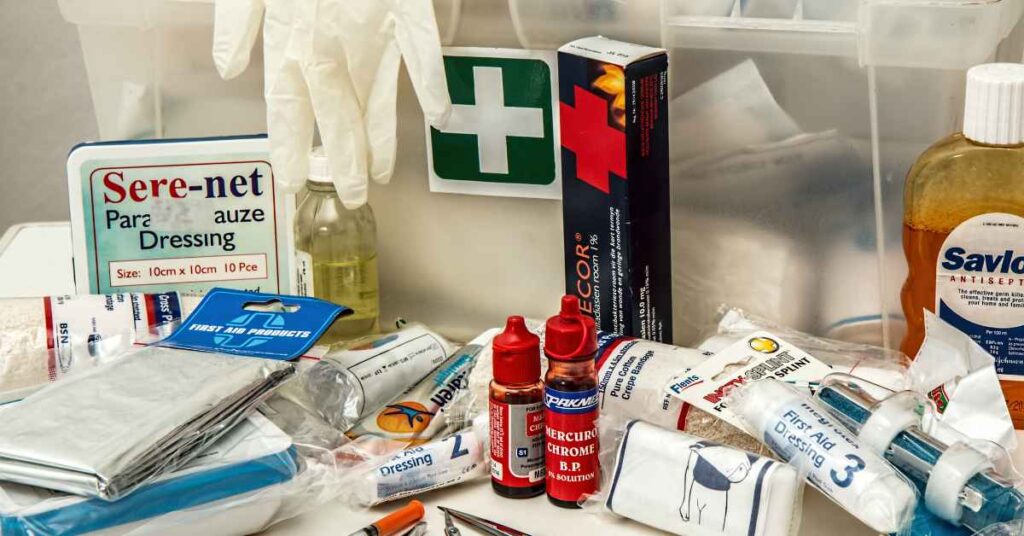
When building a first aid kit that goes beyond the basics, incorporating a few unusual but highly useful items can significantly enhance its effectiveness. These additions are designed to address more complex injuries, provide comfort in challenging conditions, or help in environments where professional medical help might not be immediately available. By considering advanced wound care, tools for physical injuries, environmental preparedness, and health monitoring tools, your kit will be prepared for a wide array of situations, making it an invaluable asset for emergency preparedness.
Advanced Wound Care
Advanced wound care items can be crucial for managing more severe injuries effectively until professional medical help can be sought. These supplies go beyond the simple bandages and antiseptics found in most kits.
- Hydrogel Dressings: The benefits of hydrogel dressings for burn injuries or chronic wounds, is they help maintain a moist environment to promote healing.
- Butterfly Stitches: Highlight the use of butterfly stitches (or adhesive suture strips) for closing small wounds temporarily, reducing the need for professional stitches.
Tools for Physical Injuries
Physical injuries, such as fractures or severe sprains, require more than just bandages and ice packs. Including specific tools to stabilise injuries can make a significant difference in recovery outcomes.
- Finger Splints: Discuss the importance of finger splints for immobilising and protecting injured fingers to ensure proper healing.
- Thermal Blankets: Outline the use of thermal blankets (also known as space blankets) for preventing hypothermia in injured persons, especially in cold conditions or shock situations.
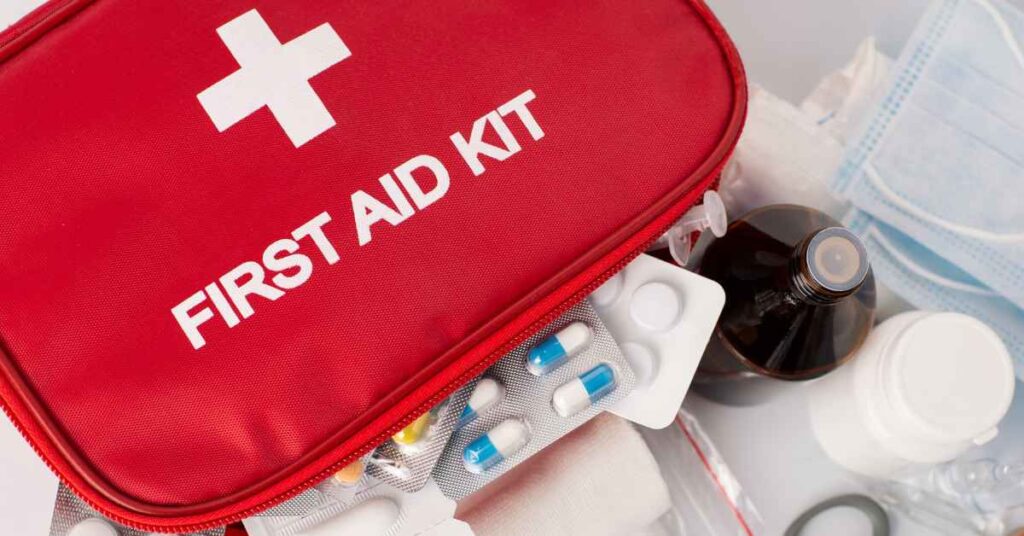
Environmental Preparedness
Being prepared for environmental challenges can be as important as addressing physical injuries, especially in outdoor or remote settings where help is not readily available.
- Water Purification Tablets: Cover the importance of having water purification tablets to ensure access to safe drinking water in emergencies.
- Emergency Whistle: Explain how an emergency whistle can be a lifesaving tool for signaling for help in situations where you might be stranded or lost.
Health Monitoring
For individuals with chronic conditions or in situations where health status may rapidly change, having tools on hand to monitor health can be vital.
- Blood Pressure Cuff: A blood pressure cuff for monitoring vital signs in individuals with heart conditions or in shock.
- Glucose Monitoring Supplies: Glucose monitoring supplies in a kit for individuals with diabetes, allowing for regular monitoring to prevent critical highs or lows.
Organisation and Maintenance
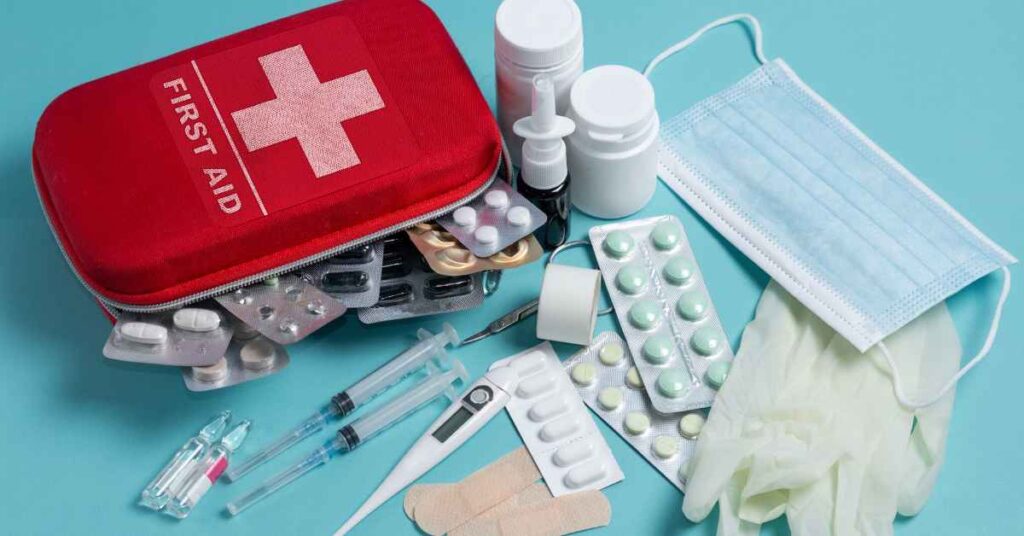
Organization and maintenance are foundational elements in the effectiveness of a first aid kit. An efficiently organised kit ensures that in moments of urgency, you can swiftly locate exactly what is needed without delay. Likewise, regular maintenance is vital for keeping your kit functional and reliable over time.
Ensuring that each component within your kit is up to date, in prime condition, and adequately stocked can be the difference between a minor and a major emergency. By implementing systematic organisation and rigorous maintenance routines, the utility and dependability of your first aid kit are significantly enhanced, readying it for any situation that may arise.
Organising for Quick Access
The key to a well-organized first aid kit lies in its layout and accessibility. Organizing supplies in a manner that makes them easy to find and use is crucial during emergencies when time is of the essence.
- Use of Labeled Compartments: Implementing clear, labeled compartments or pouches for categorising different types of supplies (e.g., wound care, medications, tools) streamlines the search process, allowing for quick retrieval of items.
- Organisation Strategy: Items should ideally be organised not just by type but also by the frequency of their use or in a sequence that reflects their order of use in typical emergency scenarios. This strategic placement ensures that the most needed items are the most accessible.
Regular Checks and Replenishment
A first aid kit is only as good as its contents are current and complete. Regular audits of your kit are essential to its readiness and efficacy.
- Routine Inspections: Establish a routine for inspecting the kit for expired or depleted items. Setting bi-annual reminders to go through your first aid supplies ensures that everything inside is ready to use. Additionally, after each use of the kit, take the time to replace or replenish items that were used, keeping the kit always prepared for the next emergency.
- Inventory Management: Maintaining an inventory list within your kit serves as a quick reference for what items are present and what may need to be replaced or replenished, aiding in the efficient management of supplies.
Keeping Inventory
An up-to-date inventory list within your first aid kit acts as a quick-check guide to ensure all necessary items are accounted for and ready for use.
- Inventory List: This list should detail each item, its quantity, and its expiration date where applicable, providing a straightforward overview of the kit’s contents at a glance.
Consider Seasonal and Activity-Specific Needs
Adaptability is a valuable feature of any first aid kit, allowing it to meet the varied demands of different environments and activities.
- Seasonal Adjustments: Modify the contents of your kit to align with seasonal challenges, such as including sunburn relief in summer or antifreeze cream in winter.
- Activity-Specific Modifications: Tailor your kit based on planned activities, adding items like blister plasters for hiking or waterproof supplies for water-based activities, ensuring your kit is versatile and prepared for any adventure.
Customising Your Kit
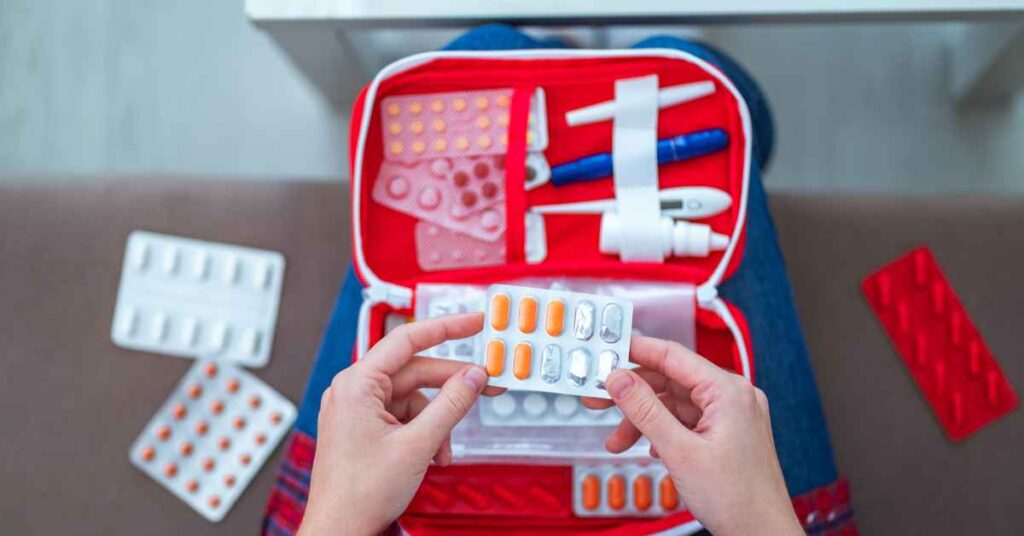
Customising a first aid kit to meet specific requirements is a nuanced process that involves weighing the benefits of constructing a kit from scratch against those of starting with a pre-packed option.
This decision is influenced by factors such as individual or group needs, financial considerations, and the time one is willing to dedicate to assembly.
Moreover, the practical utility of a first aid kit is greatly enhanced when the users possess the knowledge and skills to use its contents effectively. This detailed exploration delves into the advantages of both DIY and pre-packed first aid kits, the critical role of customization, and the undeniable value of first aid training.
DIY vs. Pre-Packed Kits
The choice between assembling a DIY first aid kit and opting for a pre-packed one is pivotal in the customisation process, with each route offering distinct benefits and potential limitations.
- Pros and Cons:
- DIY Kits: Embarking on a DIY project to build a first aid kit from the ground up affords unparalleled flexibility and personalization. This approach allows for the inclusion of items specifically chosen based on individual health conditions, activities, or risk assessments, ensuring that the kit is perfectly aligned with the user’s needs. However, this method can be time-consuming and may require more upfront research to identify the most appropriate and effective items.
- Pre-Packed Kits: Pre-packed first aid kits offer the advantage of convenience and immediate availability. They are typically assembled based on general emergency scenarios and can serve as a solid foundation for further customization. The downside is that these kits might contain items that are unnecessary for your specific situation or lack specialized items you may need, potentially leading to wasted space and resources.
- Why Customisation is Key: Customisation is the cornerstone of creating a first aid kit that is truly effective in emergencies. Tailoring a kit to cater to specific scenarios, activities, or health conditions ensures that you are prepared to respond to the unique challenges these situations present. Customisation transforms a generic collection of supplies into a targeted emergency response tool, significantly enhancing its usefulness during critical moments.
Training and Knowledge
The efficacy of a first aid kit extends beyond its contents; it is fundamentally linked to the user’s ability to employ its components effectively. As such, first aid training emerges as an essential element of preparedness.
-
Encouraging First Aid Training: Formal training in first aid is invaluable, empowering users with the knowledge and confidence needed to use their first aid kit to its full potential. Such training covers a broad spectrum of emergency scenarios, from minor injuries to life-threatening situations, and teaches practical skills like CPR, wound care, and how to react in a crisis. Encouraging or even facilitating first aid training for individuals or groups significantly amplifies the impact of having a first aid kit on hand.
-
Effective Use of the Kit: Comprehensive first aid training equips individuals with the skills necessary to assess emergencies accurately, administer appropriate care, and recognise when professional medical help is needed. This knowledge ensures that the first aid kit becomes an integral component of the response effort, bridging the gap between the onset of an emergency and the arrival of professional assistance. Training also demystifies the contents of the kit, ensuring that each item’s purpose and use are well understood, thereby maximising the kit’s overall efficacy in real-world applications.
In conclusion, the process of creating a customized first aid kit, whether through DIY efforts or by modifying a pre-packed option, is significantly enriched by the user’s knowledge and skills in first aid. This combination of thoughtful customization and comprehensive training establishes a robust framework for emergency preparedness, ensuring that individuals are not only equipped with the necessary tools but also the crucial know-how to use them effectively in times of need.
Our Baby First Aid Courses
Our baby first aid courses are available in person in your home and online. We run classes in your home with groups of 2, 4 or up to 10 in Sydney & Melbourne and you can book in 3 easy steps!
- Pick your class
- Follow the prompts to purchase
- We will contact you within 24 hours to lock in your date of choice
Our First Aid Certificate Courses
We run most of the popular first aid courses Australia wide. HLTAID011 Provide First Aid, HLTAID009 Provide CPR, HLTAID012 Provide First Aid in an Education & Care Setting, Mental Health first aid and CPR/LVR to name a few.
Book your public spot online or contact us if you have a group of 5+ people for onsite training.
Here are some other resources you may enjoy!
FREE GUIDE: Your Virtual Baby First Aid Kit
FREE GUIDE: Introducing Common Allergy Foods & Allergic Reactions
FREE Workplace Emergency Preparedness Plan: Grab this at the bottom of every page!
Follow for baby & child first aid and allergy info and tips on Instagram, TikTok & Facebook all @thenestcpr
